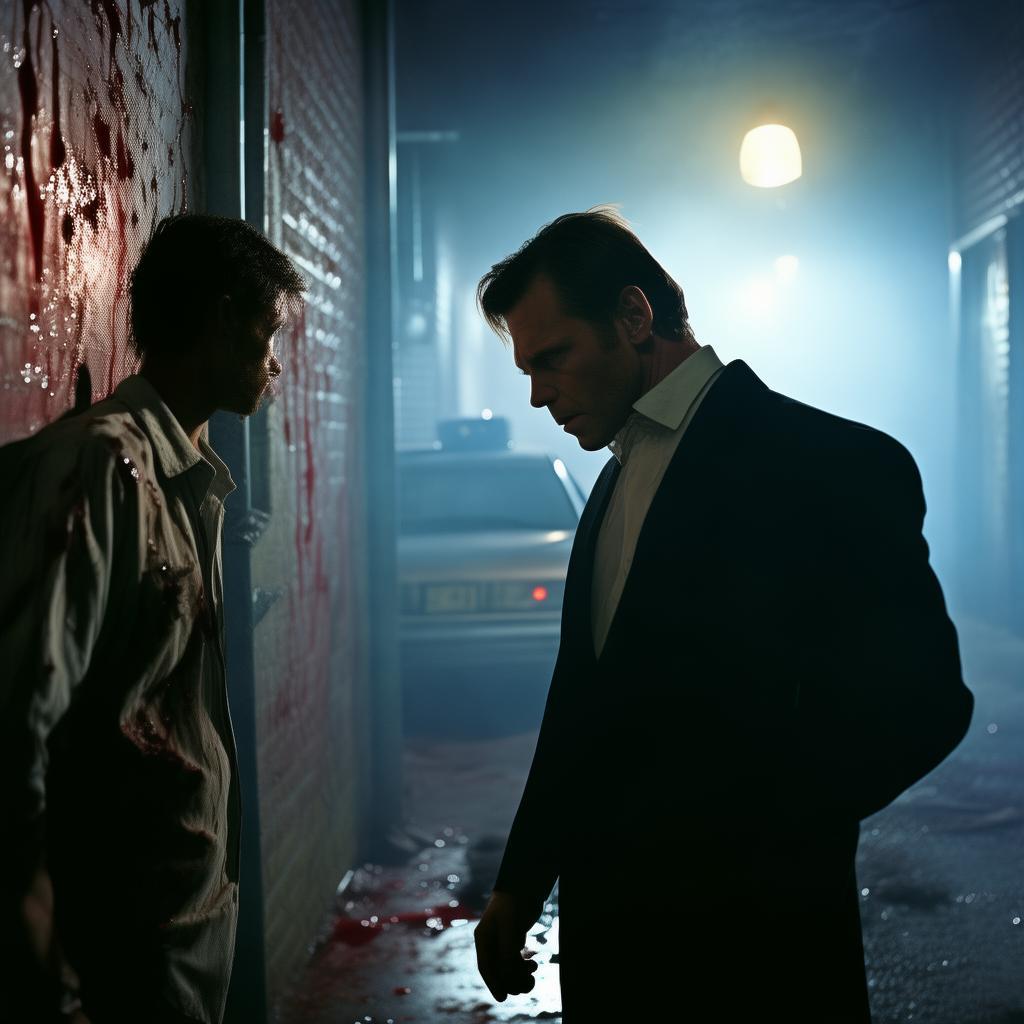The Revenant's Riddle
The night was as dark as the secrets it harbored. The rain, a relentless torrent, beat against the windows of the old, abandoned mansion on the outskirts of the city. Inside, a single light flickered, casting eerie shadows across the room. The man sitting at the table, his back to the window, was lost in contemplation. His name was Dr. Elias Whitmore, a brilliant but reclusive philosopher whose work on the Ironclad Paradox had made him a pariah in the academic community.
Elias had been called to this mansion by a mysterious benefactor, a man who claimed to be in grave danger. The benefactor had sent a riddle, a puzzle that seemed to be the key to a murder that had never been solved. The man's identity was a secret, but the threat was very real. The benefactor had warned Elias that the killer was still at large, and that he, Elias, was the next target.
The riddle was simple yet cryptic:
"I am a man with no face, yet I am seen by all.
I am a voice without sound, yet I am heard by all.
I am a presence without form, yet I am felt by all.
I am the killer, and I seek you. Find me, and you will be safe."
Elias' mind raced. The Ironclad Paradox, which he had formulated, stated that the nature of reality was immutable; once a fact was established, it could not be changed. This meant that the riddle was not just a puzzle, but a truth that had to be uncovered. He began to analyze each line, searching for a connection to the Ironclad Paradox.
As he delved deeper, Elias realized that the riddle was a metaphor for the paradox itself. The man without a face was the paradox, a concept that could not be seen or heard but was felt by all. The voice without sound was the truth, which could not be spoken but was known to all. The presence without form was the reality, which could not be perceived but was experienced by all.
The revelation sent a chill down his spine. The riddle was a warning, a message from the Ironclad Paradox itself. Elias knew that he had to solve it, not just to save himself, but to prevent the paradox from unraveling reality.

He spent the night poring over the riddle, his mind racing with theories and possibilities. The next morning, he discovered that the benefactor had vanished, leaving behind a single clue: a photograph of a young woman, her eyes filled with fear and sorrow.
Elias followed the trail, leading him to a rundown apartment building. Inside, he found the woman, her name was Lila, and she was the key to the mystery. Lila had been the benefactor's assistant, and she had witnessed the murder. The killer, she had told Elias, was someone she knew well, someone who had been close to her.
The killer was Dr. Evelyn Carter, a former colleague of Elias's, who had been obsessed with the Ironclad Paradox. Carter had convinced himself that he could control reality, that he could be the ultimate power. He had used the paradox to manipulate events, to create the illusion of his own omnipotence.
Elias confronted Carter, who was now holding a gun to Lila's head. Carter's eyes were wild with a mixture of fear and excitement. "You see, Elias," he ranted, "I am the Ironclad Paradox. I am the truth, the reality, the power. And you cannot stop me."
Elias, calm and collected, stepped forward. "You are wrong, Evelyn. The paradox is not a tool for power, but a truth that must be understood. You have misinterpreted its meaning, and now you are the one who will be stopped."
Carter's eyes widened in shock as Elias revealed the truth about the paradox. The paradox was not a means to control reality, but a reminder of its fragility. It was a truth that could only be accepted, not manipulated.
In a moment of clarity, Carter dropped the gun, his mind overwhelmed by the truth. Lila was safe, and Elias had saved her from a killer who had been driven by delusion.
As the police arrived, Elias stood with Lila, watching as Carter was taken away. The rain had stopped, and the sun was beginning to rise, casting a hopeful glow over the city. Elias knew that the Ironclad Paradox was still a mystery, but he had taken a step towards understanding it. And in that understanding, he had saved not just himself, but the fabric of reality itself.
✨ Original Statement ✨
All articles published on this website (including but not limited to text, images, videos, and other content) are original or authorized for reposting and are protected by relevant laws. Without the explicit written permission of this website, no individual or organization may copy, modify, repost, or use the content for commercial purposes.
If you need to quote or cooperate, please contact this site for authorization. We reserve the right to pursue legal responsibility for any unauthorized use.
Hereby declared.









